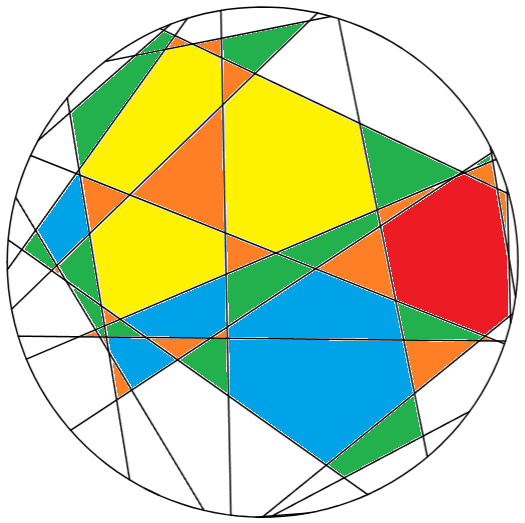Draw $n$ random chords in a circle, where each chord connects two independent uniformly random points on the circle.
As $n\to\infty$, which kind of polygon (triangle, quadrilateral, pentagon, etc.) occupies the most total area?
In the following examples, the polygons are color-coded.
$n=15$:
$n=20$:
$n=30$:
Triangles seem to be the most numerous, but smallest (in terms of average size). As the number of sides increases, the polygons seem to get fewer, but bigger.
I guess that, as $n\to\infty$, one kind of polygon should emerge as the most dominant, in terms of total area.
I made a random chord generator. Unfortunately, it does not color-code the polygons. (For the examples shown above, I color-coded the polygons manually.)
Context: This is another question of mine about many random chords in a circle. Earlier questions are here and here.



